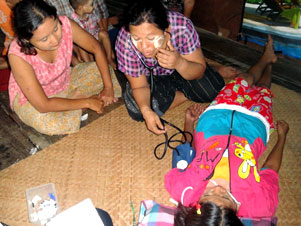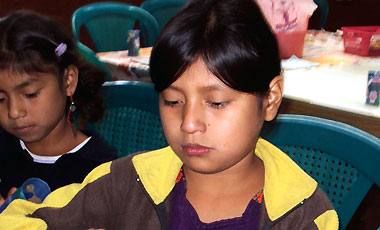By Gladys Gonzalez, MM

Much of Tanzania’s landscape is surrounded by large boulders, which entrepreneurs are removing to construct buildings. The process is leaving huge holes, like craters, rendering the land unusable, causing massive erosion, and pushing out wildlife, flora and fauna.
Added to that is the plight of the women who labor to break up the stones to construct the buildings.
Trucks transport the boulders to a site where the women’s task is to cut them into small stones about three inches in diameter. They do this by hand, using large, heavy sledgehammers. The women then deposit their work into 10 kilo sacks (a little under 23 pounds), which the truckers haul away. The women are paid 200 Tanzanian shillings per bag, the U.S. equivalent of about 13 cents. They labor all day for perhaps $1.
Many of the women have lung problems. Many are completely blind or have impaired vision caused by the stone chips, particles and dust covering not only their faces but their whole bodies as they work day after day under a blazing sun. They have no hope of ever leaving this work until their bodies completely give out. I am working to help them heal holistically, that is, restoring their whole being, body and spirit, to health.
During my 18 years as a missioner in Tanzania I have discovered the importance of holistic healing working not only with women’s groups but also youth groups and children with hiv. I started out as a high school math teacher. At first it didn’t occur to me that I could go deeper than just dealing with the students’ minds in the learning process. The mind is just one part of the person as a complete system—physically, psychologically and spiritually.

Some of the practices I use are taken from a program developed in Central America and based in Watsonville, Calif., called “Capacitar,” meaning “enabling,” in which I have been trained as a practitioner. The program encourages meditation, body movement, visualization and breathing, active listening, simple psychotherapeutic skills, acupressure for alleviating pain and stress, and indigenous healing herbs as medicine and food. The arts, including dance, music, sculpture and painting, are all important tools in the process of helping people heal.
I am bringing these tools to the women who cut stones for a living. I meet with them for approximately four hours each week. Half of that time we spend learning and practicing different healing exercises and meditation to restore their energy that has been depleted by the difficulties of their everyday lives. The rest of the time we do art projects as a tool for healing as well as income-generation.

My work with these women is just a tiny beginning, but at least it is a beginning. Prior to this project, they were unaware of life outside the only one they knew. Although the four hours a week that I provide for them will not radically change their lives, it does allow them to view a different horizon; it enhances their self-esteem.
In order to compensate for their lost wages while these women attend our weekly meeting, we began a microcredit project with funds I had raised. We have been able to generate a little money from the artifacts and cards we make during our sessions.
I am always touched and humbled by the life and endurance of such women. They are not poor! They are rich inside; they simply have been denied their rights. They have taught me more than the knowledge I have shared with them.
What gives me hope is that the women who come to our weekly meetings are committed to having their daughters attend school. This may be the greatest outcome for their future.








